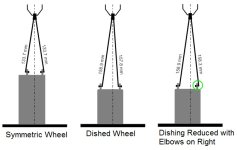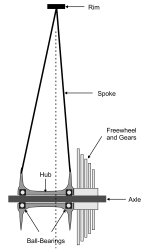Hi ESFMs,
I'm relacing a few gearless DD hub motors and I just finished getting my measurement numbers to put into the grin tech spoke calculator.
Now I'm indecise about the elbow orientations. The motors originally came laced in with alternating in-out elbow sequence.
Should I stick with the the original setup or should I consider going all ins or all outs? What would make for the strongest wheel build?
I'm lacing up 36H 26" rims.
Clinton
I'm relacing a few gearless DD hub motors and I just finished getting my measurement numbers to put into the grin tech spoke calculator.
Now I'm indecise about the elbow orientations. The motors originally came laced in with alternating in-out elbow sequence.
Should I stick with the the original setup or should I consider going all ins or all outs? What would make for the strongest wheel build?
I'm lacing up 36H 26" rims.
Clinton



